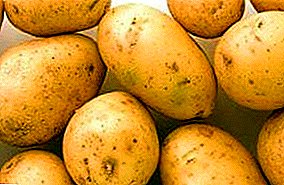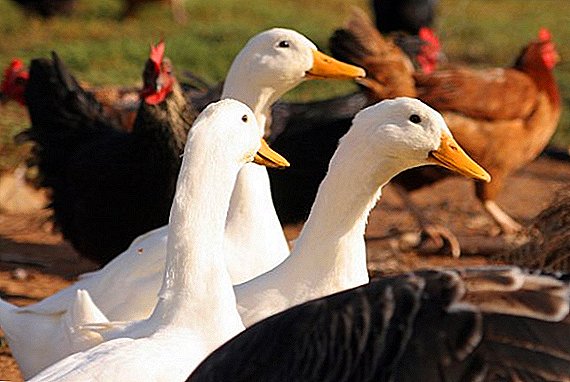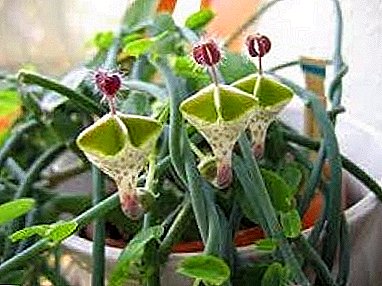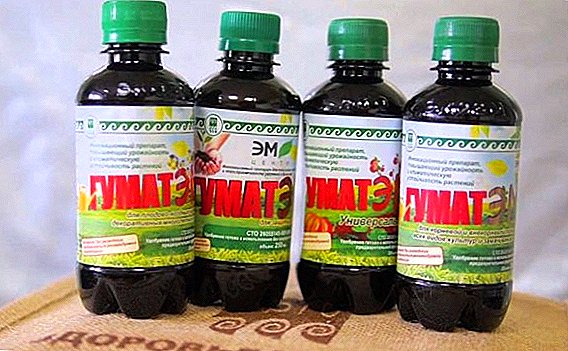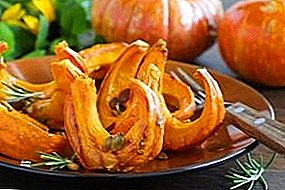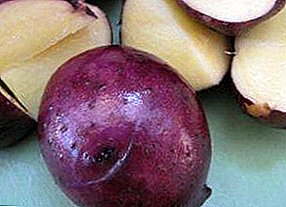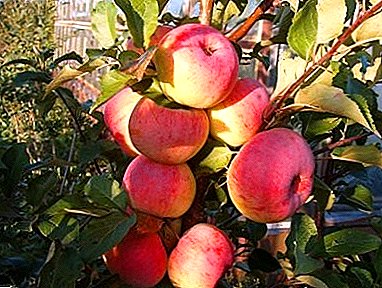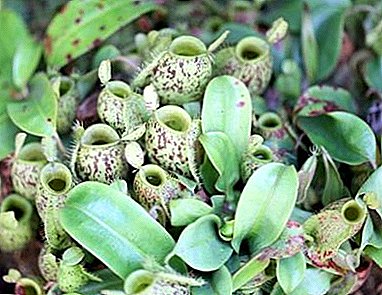
Nepentes - what is it? This is a plant with external digestion. Only an experienced gardener can handle it.
But the result of painstaking work and care for exotic picky will exceed all expectations. After all, this amazing plant can not leave anyone indifferent.
What it is: general description
Homeland plants are considered south-eastern Asian tropics. Nepentes is also found in the Seychelles and the Philippine Islands. It grows in Australia, Madagascar, Thailand and Singapore.
 At home, nepentes can grow tall up to 60 cmwhile “at liberty” can grow up to 20 meters.
At home, nepentes can grow tall up to 60 cmwhile “at liberty” can grow up to 20 meters.
Nepentes may look like a shrub or semi-shrub vine. Stems thin and grassy with light lignification. The leaves are large, with a pronounced midrib and drawn top.
The key feature of nepentes is leaf jarsover which there is a cap. In the lower part there are special glands that secrete nectar to attract insects that are edible to nepentes.
They sit on the upper smooth part of the jar and slide inwards, getting into the digestive juice. By feeding in this way, the plant receives many nutrients.
Seeds are stored in a leathery box, chambered by internal partitions. The seeds themselves are small with a straight cylindrical embryo.

Types and varieties with photos
In the genus Nepentes, there are more than seven species of these plants. If you take into account the hybrids, the fruits of the work of breeders - the bill will go to hundreds.
Winged (alat)
His homeland is the Philippines. Under natural conditions, the vine grows in length from 1.5 to 4 meters, at home - up to 2 meters. The leaves of the plant are green, have the shape of a lancet, the tops are pointed. The jugs of this variety nepentes have a light green color with burgundy specks.
Rafflesy
The variety is distinguished by large, up to half a meter long leaves and relatively small jugs. Their size rarely exceeds 20 cm. The color outside is green, with red patches in the form of stripes and spots. The walls of the jug inside have a bluish color.
Truncated
It differs from other species by large, up to 50 cm in length of a dark brown jug. The name of this type of plant was given by the shape of the leaves, as if chopped off at the end.
Rajah
In the natural environment grows up to 6 meters. Large jugs, about 16 cm wide and up to 35 cm long, are capable of digesting not only insects, but also small vertebrates that have fallen inside.
Madagascar
Differs in crimson jugs, up to 25 cm long. The perennial itself reaches 90 cm in length.
Jug
Miniaturized, traps heaped to attract the attention of flies and mosquitoes.
Sanguinia
Nepentes jugs have a blood-red color, grow up to 30 cm long.
Home care
Safe and unpretentious flower. Features care for netemesom at home.
IMPORTANT! In the jug should always be waterfilling the pitchers to almost half. Usually the plant itself produces enough moisture, but if for some reason it spills out, water should be added manually.
Can I keep at home?
Despite its exotic look and treacherous disposition, nepentes are dangerous only to insects. They don’t carry danger for people, so experienced flower growers grow "jugs" at home.
The snag is different: not all species can adapt to the domestic existence. In addition, not every amateur grower will cope with the care of an insectivorous pet.
What to feed?
The video shows how to feed Nepentes:
Since the plant is insectivorous, it can be provided with appropriate feeding. This should be done every 2-3 weeks. Best fit live bloodworms. They need to be placed in a third of the jugs one worm.
It is important not to overdo it and not overfeed nepentes After all, it can do without insects at all.
The method of obtaining food - how to feed yourself
The main diet of these plants is insects, however, some types of nepentes are able to catch and keep even small animals. Traps exude a pleasant scent that attracts its victims. Insects climb into the jug and fall on its bottom, where there is a liquid filled with enzymes - the process of digestion begins. Substances are quite active, and are able to penetrate the protective chitinous shell of an insect and dissolve it, extract useful substances for the plant.
Pruning
This procedure is carried out during plant transplantation. Trimming it hard enough. As a result, it appears new shoots, they need to pinch over the seventh eye.
But the young shoots that appear after one and a half months after this should be removed, as no jugs are formed on them.
Watering
Summer watering frequency - 1 time in 2 days. For this purpose, demineralized water at room temperature is used. In winter, watering should be reduced to 1-2 times a week.
In addition to watering, nepentes will be happy and regular spraying. Indicators of preferred humidity for it reach 90%.
For spraying requires extremely soft water, which must be defended in special conditions: in the light and certainly in the room in which the nepentes itself is located.
Landing
For nepentes use deep clay pots. Before planting it is recommended to hold the container in water, allowing it to soak.
Transfer
The procedure is carried out every spring. Transplantation should be carried out with great caution, since very gentle lateral processes extend from the taproot. As a result, it is better not to destroy the earth com, and to cross the plant with it.
Temperature
The vast majority of Nepentes are very thermophilic and prefer temperature. from 16 to 24 degrees.
Lighting
The flower likes bright, but definitely diffused light. Therefore, the best option is the eastern window. In the southern and south-western windows, the plant should be shaded from the direct sun, otherwise burns may occur, and pitchers will not form.
Can be used artificial lighting. In winter, the plant should be placed closer to the window, but still protected from direct sun.
Bloom
Inflorescences are a brush dotted with unusual medium-sized flowers without petals, but with three or four sepals. Unfortunately, "in captivity" nepentes blooms quite rarely.
Priming
The store soil of nepentes is categorically inappropriate, just as clean peat, moss or coal is not suitable. He needs acidity within pH 4.8 - 5.5. Therefore, it should be prepared by yourself.
To do this, you need to take 4 shares of high peat or sphagnum, 3 shares of coconut fiber and 3 shares of fir bark. Another option: take three parts of peat, coconut fiber, sphagnum, perlite and add to them 1 part of the bark.
Fertilizer
Under the root of this plant is better not to feed. Instead you can spray his leaves from small atomizer leaves of the plant are diluted 3-5 times as fertilizer for orchids. Components such as iron, copper and boron chelates.
- Venus flytrap.
- Darlingtonia Californian.
- Sundew.
- Sarracenia.
Breeding
Cuttings
In winter or spring, cuttings are cut just below the leaf. The slice is covered with moistened sphagnum is fixed with wire. The handle is placed in a pot, providing protection from the bright sun.
For it is necessary to ensure proper temperature (25-30 degrees heat) and regular spraying. Within one and a half months, the sprout will take root, after which it can be transplanted into a permanent container.
In the second year, nepentes need to be cut. over 5 or 6 sheets - It will contribute to the development of pitchers.
Seeds
This method of plant reproduction is quite rare, since the seed of the required quality is extremely difficult to obtain. The fact is that seed germination remains extremely limited time - up to 3 weeks. Naturally, to buy in the store the seeds of the right age in this case is quite difficult.
Another way to get seeds is to have two nepentes plants at home and wait for flowering.
IMPORTANT! Blooming at home is rare, and it is imperative that the flower is pollinated by insects, otherwise the fruit will not tie up.
If you were able to get the seeds of the desired quality - they will surely sprout.
 Landing is as follows:
Landing is as follows:
- Prepare small pots and fill them with a mixture of moss and sand. If you have moss with long fibers - it should be cut, so that in the future, when transplanting, do not damage the root system of the plants.
- Fill the containers with moss and put them in a microwave for 2-3 minutes - this will disinfect the containers.
- Moisten the moss and evenly distribute the seeds in it.
- Spray the surface of the pot with a spray bottle.
- Put the container in a bag or container - for growth, plants will need high humidity, 90-100%.
- Plants should receive light and heat 14 hours a day, to ensure this item, the easiest way is to purchase a fitolamp.
- Once a day, check the planted seeds - if mold has appeared, ventilate the pots and moisten them.
- Seeds germinate successfully at a standard room temperature of 20 degrees.
Dividing bush
This method is relevant if it is necessary to divide the adult bush.
Stages of the process:
- Carefully remove the plant from the old pot.
- Dip the root system in warm water and clean the roots of the substrate.
- Using a sharp, sterile knife, separate the part of the plant with the roots and immediately sprinkle the cut sections with crushed coal.
- Cutting cuttings in the water with growth promoters.
- After soaking each cutting is placed in a separate pot and watered.
- The plant requires a temperature of at least 26 degrees and high humidity.
- The first shoots will appear after 2-2.5 months.
IMPORTANT! It is best to grow nepentes in pendant baskets for orchids, to ensure air access to the roots.
Diseases and pests
The most important pests of the plant - aphid and mealybug. They may appear due to excessive dryness of the air and because of the land enriched with nitrogen.
If there are some cheeses, they should simply be removed with a cotton swab dipped in beer or soapy water. Special preparations that do not contain paraffin will help to get rid of a large number of insects.
A solution of 20 g of potash soap per 1 liter of water will help fight with aphids (do not forget to cover the ground with a film during processing). A certain effect can provide and laundry soap.
Of the drugs are effective pyrethroids. But, it should be noted that the chemicals do not like nepenthesu - if there is a possibility, it is better to do without them.
Dry ends of leaves
 Most likely, the point is low humidity. It is necessary to spray the plant more often and, perhaps, to move it to another place. It is possible that heating devices in the immediate vicinity of the flower caused the dryness of the air.
Most likely, the point is low humidity. It is necessary to spray the plant more often and, perhaps, to move it to another place. It is possible that heating devices in the immediate vicinity of the flower caused the dryness of the air.
However, excessive moisture also threatens to trouble - fungal diseases and mold can appear. Therefore, if red or brown spots appear on the leaves, treatment is necessary. fungicides and a decrease in humidity.
Conclusion
The life expectancy of nepenthes will depend on the care: a predatory flower can last only a few months, but with proper care and a competent approach will please its owner 5 years.


